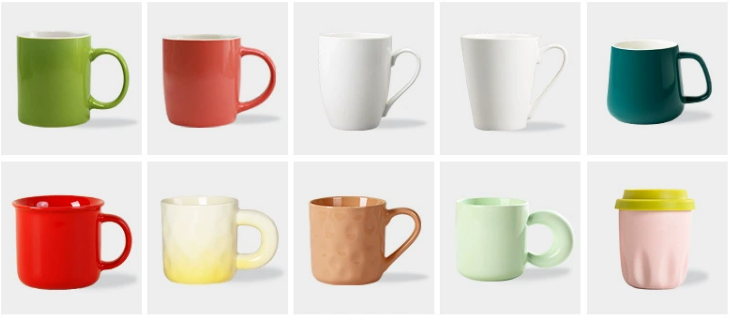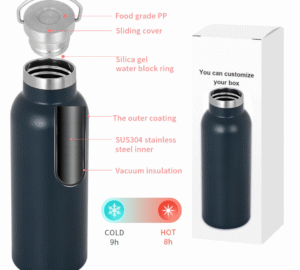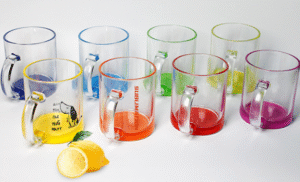Is your favorite coffee getting cold too fast in your current mug? It's frustrating when a mug stains easily or feels clumsy. I'll show you what to look for.
The best ceramic mugs have thick walls for excellent heat retention, a smooth and non-porous glaze to prevent stains, a comfortable handle that fits your hand, and a stable base to prevent spills. It’s all about combining comfort, durability, and performance.
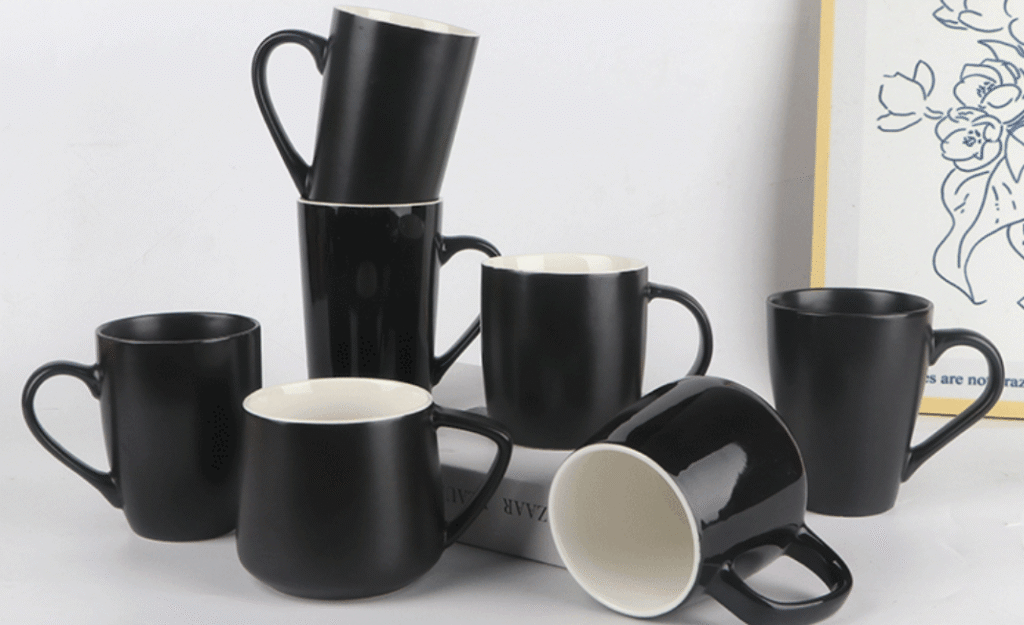
Over the years, I've printed designs on countless types of mugs, from simple stoneware to fine porcelain. I’ve learned that a mug is more than just a vessel for coffee or tea; it's a small but important part of our daily routine. The right mug can make your morning brew feel a little more special. It needs to feel good in your hands and keep your drink at the right temperature. Let's break down what features really make a ceramic mug stand out from the rest.
What is the best ceramic mug for you?
Confused by all the options labeled as the "best" mug? Buying a mug that looks great but performs poorly is a waste. I'll help you focus on the features that matter.
The best ceramic mug for you is one that fits your personal needs. Look for thick walls if you want great heat retention, a fully sealed glaze to resist stains from coffee and tea, a comfortable handle, and a weight that feels right in your hand.

I always say there isn’t one single "best" mug, but there is a "best" mug for what you need. It really comes down to a few key qualities. When clients ask me for a durable, high-quality mug for their office, I don't just point to the most expensive one. Instead, we talk about things like thickness. A thicker wall means your coffee stays hot longer, which is a huge plus. The glaze is also critical. A cheap, poorly applied glaze can develop tiny cracks (called crazing) that trap coffee and tea stains. A high-quality, non-porous glaze keeps the mug looking new for years. Finally, the handle and base are about daily use. A handle that fits two or three fingers is more comfortable, and a wider base provides stability on a cluttered desk.
Key Qualities of a Great Ceramic Mug
| Feature | Why It Matters | What to Look For |
|---|---|---|
| Material Thickness | Provides better heat retention to keep drinks hot longer. | A wall thickness of at least 4mm (about 1/6 inch). |
| Glaze Quality | Prevents staining, chipping, and bacteria growth. | A smooth, glossy, uniform surface with no visible cracks. |
| Handle Design | Ensures a comfortable and secure grip. | A handle that fits 2-4 fingers comfortably without sharp edges. |
| Base Stability | Reduces the risk of tipping and spilling. | A base that is as wide or slightly wider than the rim. |
Which is better, ceramic or porcelain mugs?
You see "ceramic" and "porcelain" used for mugs and don't know the real difference. Choosing the wrong one means you might get a heavier, less durable mug than you expected.
Porcelain is a type of ceramic, not a separate category. It's made from finer clay and fired at much higher temperatures. This makes porcelain thinner, lighter, more durable, and less porous than other ceramics like stoneware. For elegance and durability, porcelain is often better.
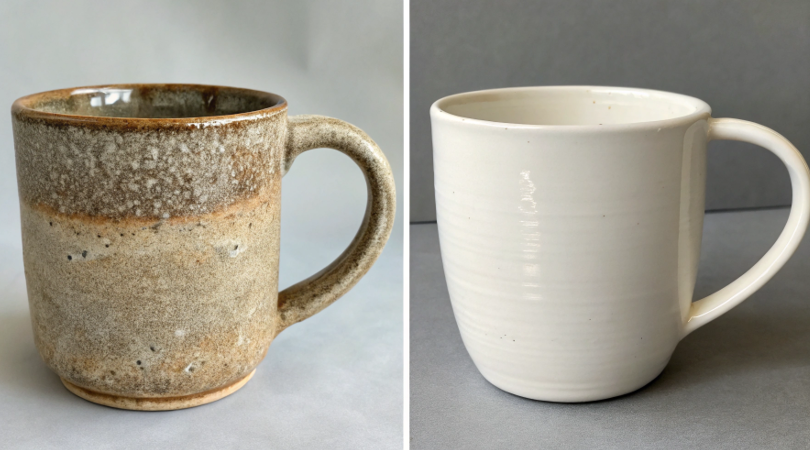
This is a point of confusion I clear up all the time. Think of "ceramic" as the big family name. This family includes earthenware, stoneware, and porcelain. Porcelain is like the sophisticated, stronger member of the family. When sourcing mugs for my business, the choice between stoneware and porcelain is critical. Stoneware is thick, rustic, and has a homey feel. It's fantastic for that classic diner mug look. Porcelain is more refined. It allows for thinner walls, a more delicate feel, and a brighter white base color, which makes printed colors pop. While stoneware is plenty durable, porcelain's high-temperature firing process makes it more resistant to chipping and thermal shock (cracking from sudden temperature changes).
Ceramic vs. Porcelain: A Head-to-Head Look
| Feature | Stoneware (Common Ceramic) | Porcelain |
|---|---|---|
| Material Composition | Denser, less refined clay. | Very fine, pure clay (kaolin). |
| Firing Temperature | Lower (around 2200°F / 1200°C) | Higher (up to 2650°F / 1450°C) |
| Durability | Good, but can be prone to chipping. | Excellent, very chip-resistant. |
| Thickness & Weight | Thicker and heavier. | Thinner, lighter, and more elegant. |
| Heat Retention | Excellent due to thick walls. | Good, but can cool faster due to thinner walls. |
What are the disadvantages of ceramic mugs?
You love the cozy feel of your ceramic mug, but it chipped or has ugly stains. It’s frustrating when a favorite item shows its weaknesses. Let’s talk about the downsides.
The main disadvantages of ceramic mugs are their potential to chip or break if dropped. Cheaper ceramic can also be porous, leading to stains from coffee and tea. They can also experience "thermal shock," cracking if exposed to sudden, extreme temperature changes.

While I love a good ceramic mug, I've seen all the ways they can fail. The most common issue is chipping. A busy office kitchen or a clumsy morning is all it takes to knock a mug against the sink and take a chip out of the rim. That's why porcelain's added durability is so appealing. Another big problem, especially with older or cheaper stoneware, is staining. If the glaze isn't perfect, it can develop tiny cracks that are invisible to the eye but are large enough to trap coffee and tea residue. This leads to that brownish stain on the inside that you just can't scrub away. Finally, thermal shock is a real risk. Pouring boiling water into a very cold mug, or putting a hot mug into cold water, can cause it to crack.
Common Ceramic Flaws
- Brittleness:
- Despite their heavy feel, ceramic mugs are brittle. A drop onto a hard floor is almost always fatal, and even a sharp knock on a counter can cause a chip.
- Staining Potential:
- A poor-quality glaze makes the mug porous. This allows dark liquids like coffee and tea to seep in and create permanent stains.
- Heat Sensitivity:
- They are not always microwave or dishwasher safe, especially mugs with metallic prints. Always check the bottom for care instructions to avoid damage.
What is the healthiest mug to drink out of?
Worried about what your mug is made of? With news about chemicals in products, it’s smart to wonder if your daily coffee mug is truly safe and healthy for you.
The healthiest mugs are made from materials that are non-porous and do not leach chemicals. Glass, high-quality glazed ceramic, porcelain, and food-grade stainless steel are all excellent, safe choices. The key is to avoid mugs with lead-based glazes or low-quality plastics.
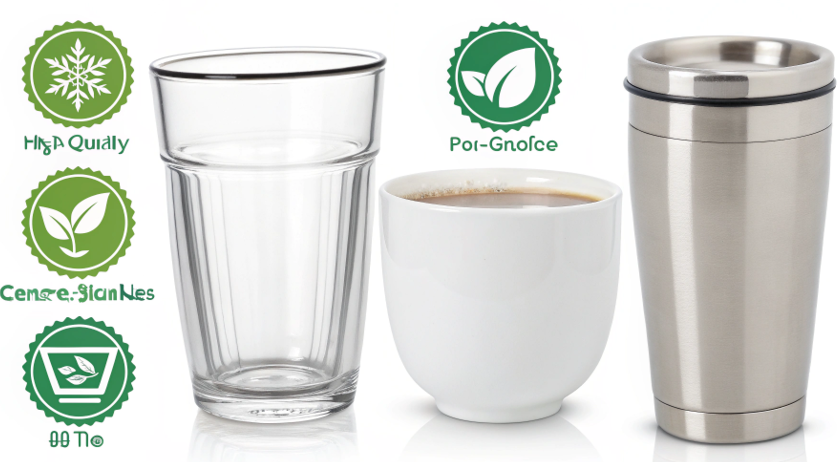
This is a question I take very seriously, both as a manufacturer and a consumer. Your health is not something to compromise on. The good news is that most mugs sold today from reputable brands are perfectly safe. The biggest historical concern was lead in the glaze, which was used to make colors brighter. However, this practice is now heavily regulated in most parts of the world. A properly fired ceramic or porcelain mug has a vitrified (glass-like) surface that is inert and non-leaching. This means nothing gets from the mug into your drink. Glass is also perfectly safe for the same reason. Stainless steel is another fantastic choice, which we use for cookware and surgical tools because it is so stable and hygienic.
Your Healthiest Mug Options
| Material | Why It's Healthy | Things to Watch For |
|---|---|---|
| Glass | Completely non-reactive and non-porous. No chemicals can leach. | No significant health risks. |
| Ceramic/Porcelain | When properly glazed and fired, it is inert and non-leaching. | Avoid old, cracked, or handmade mugs from unknown sources. |
| Stainless Steel | Food-grade steel is stable, rust-proof, and doesn't leach. | Ensure it is specifically "food-grade" (e.g., 18/8). |
For maximum peace of mind, always buy from trusted retailers who adhere to safety standards.
Conclusion
The best ceramic mug combines thick walls for heat, a durable glaze, and a comfy handle. Porcelain offers a more durable and elegant option, but any high-quality ceramic mug is a healthy choice.
